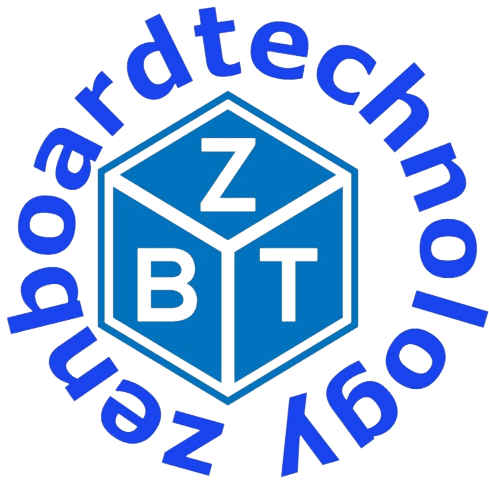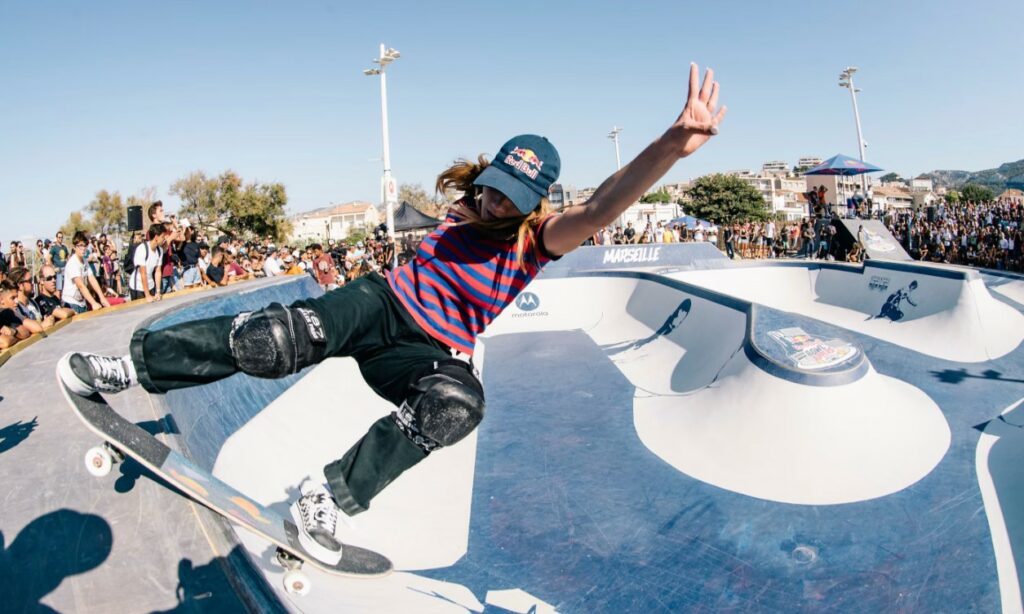Skateboarding can be enjoyable, and thrilling but also challenging. The skateboard is typically made of wood that is coupled to wheels. It’s the most sought-after kind of sport and recreation for children. It’s not difficult to master how to skateboard, but it’s an extremely difficult sport to learn. If you begin with the basics and techniques, it shouldn’t be difficult to master. Many novices attempt more difficult tricks as they begin, but this isn’t the ideal way to start out. The basics are the first stage of success and in this Skateboarding 101 guide, you will learn each and everything you need to know in a steady manner.
What Equipment Do You Need to Skateboard?
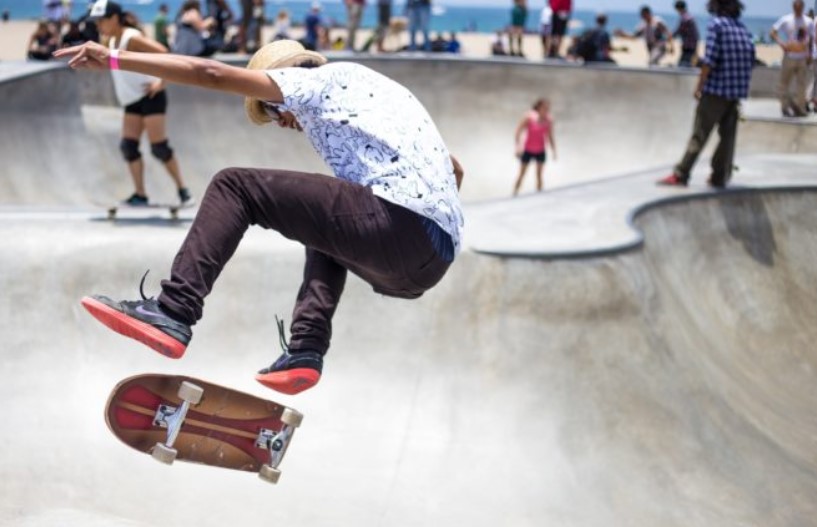
Everyone is a victim of the notion that protective gear is supposed to be snobs. But maintaining your body’s security will make certain that you can skate and perform tricks of the highest level without harm or injury to the body.
It is recommended to wear a skateboarding or multi-sport helmet that is snugly fitted to the top of your head (look for one with various pads with an adjustment that won’t be able to shift when you shake your helmet). The helmet should be put on the bottom of the forehead. There are straps on the sides that create a “V” shape around each ear and an elastic strap positioned between your cheeks. If you can fit two fingers on the buckle and in between the jaws, it’s not sufficient for you to feel comfortable. Make sure that your helmet can be used for multiple purposes and is capable of taking more than one blow.
Wrist Guards
Protection devices safeguard your wrists to reduce the risk of breaking or twisting your wrists because of a fall or abandoning your efforts when you make a mistake. They’re not suitable for all, but they’re the ideal option for people getting started and aren’t sure how to fall safely or if you fall on your hands more frequently than your knees.
Knee And Elbow Pads
If you fall and you’ll fall, pads can lessen or even reduce the severity of scrapes, burns, bruises, etc. Also, knee pads can be used to enable an ankle slide to prevent injuries when sliding through a change from vert to vert. Make sure you have sufficient padding, and the cap is made of plastic designed to withstand the stress that comes with it.
Skate Shoes
Whichever style you prefer, the best skate shoe is one with closed toes and durable, smooth, and flat rubber soles. They will hold on to the tape and prevent any shocks that enter your feet. These thick midsoles and tongues with cushioned sides are essential to protect your ankles from the spinning boards and obstructions.
Read More- Top 5 best skateboards in 2022
Selecting the Right Skateboard is Crucial
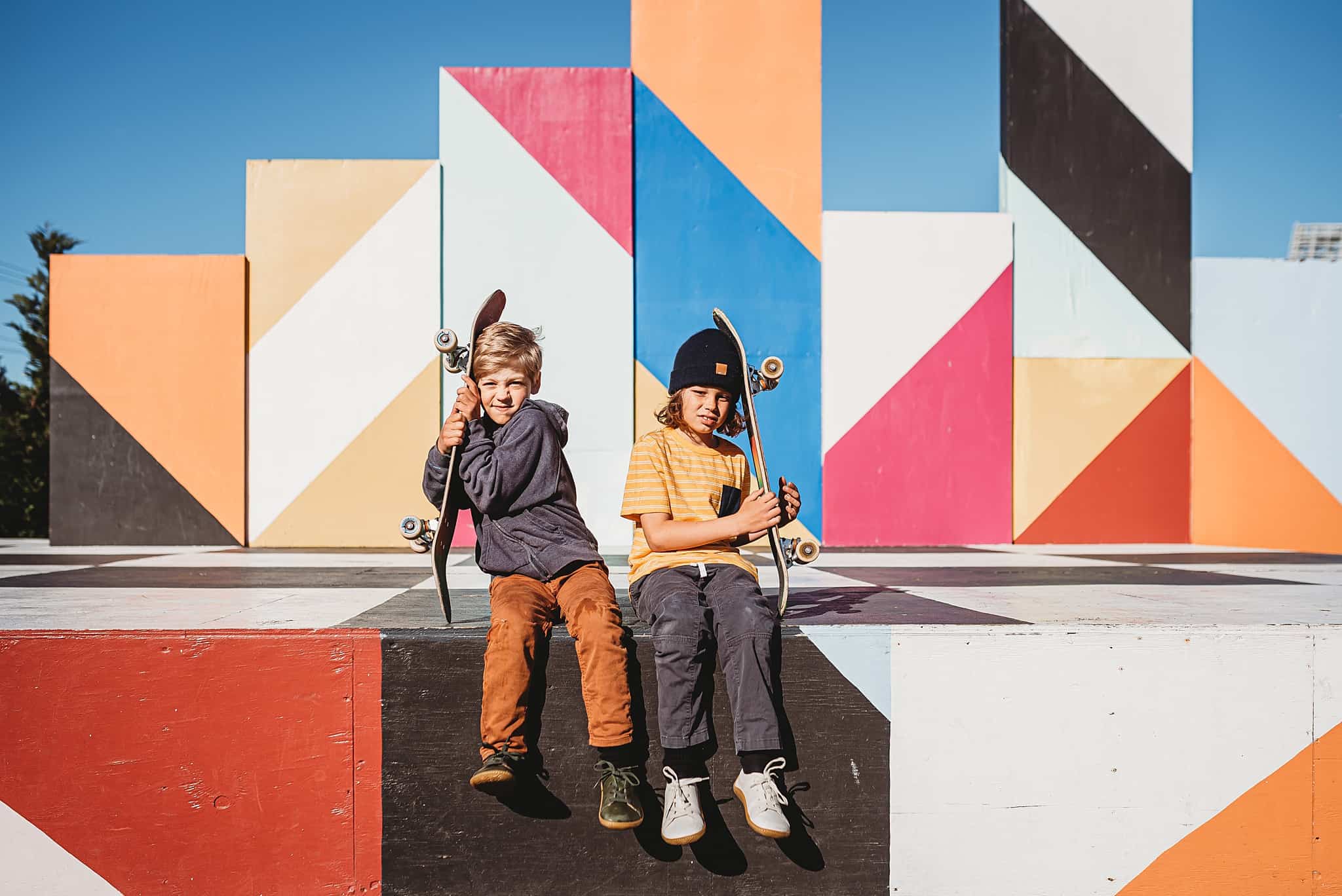
Making the correct choice of the best skateboard is the first step to begin your journey to skate. There are a variety of skateboards to choose from, and it can be a bit confusing. It is suggested to start by using a slower board than one that is designed to speed.
If you’re only beginning your journey it’s best to choose an instrument that will aid in the process of learning. After you’ve mastered the basics and have been practicing with a standard board, choose one that is built to be able to operate with high quality. In case you are not planning to buy a premium skateboard at first, however, that doesn’t mean you shouldn’t get a lower-cost version. There’s a wide selection of top skateboards for sale for a fair cost. It is crucial to pick the highest quality.
Choose the longest flat and longboard, in the beginning, to provide enough space so your feet can move. Longboards weren’t made to be expensive boards. They were made to help skateboarders who are new to the sport as they’re simple to move and maneuver. Furthermore, it is crucial to pay attention to the wheels. Be sure to purchase skateboards with wheels that are smaller or less pliable with the best grip and shock-absorbing characteristics.
Wear the Right Socks and Shoes
To ensure that you’re safe and comfortable, purchasing the right pair of footwear and socks is vital. Make sure you purchase socks that have sufficient thickness to guard your ankles. Also, they should be long enough so that your shins stay safe.
Your shoes must be in the category of skate shoes to make sure you’re in good condition while you skate. If you’re wearing brand new shoes that have low-profile soles, then they are able to be used. It’s not recommended to use skateboard shoes because it’s about balance and feel. Other shoes might not aid in sizing the board or keeping it balanced.
How to Ride a Skateboard?
Like every skill, skating is a process that requires dedication, practice, and determination. Everyone who skates should learn the basics before trying new tricks or keeping pace with the pros. If you’re planning to go to the skatepark or even try street skates, then you must read these guidelines:
Choosing a Stance
There are two possible types of positions you can take when skating: the standard and the fun. Regular refers to skating using your left leg in a forward direction and pushing the board forward with the left side of your hand. Goofy means that you skate using your left foot to the front and push using your left foot. To determine which one is best for you, simply sit straight and allow someone to gently push you back from behind. The one you’re shielding yourself from is leading.
Pushing
Put your front foot on the bolts in front of you located on the top of your truck. Your feet’s front should point forward towards the other side of the board but at an angle. Use your rear foot to push through the board. You can then push your body ahead. If you’d like to increase speed, keep pushing. Once you’ve reached your desired speed, place your rear foot on your back perpendicular to the deck. When the back of your foot is placed over the deck’s top, it’s possible to shift your front foot in the same direction parallel to the back foot.
Turning
Suppose your feet are in the skate position. Turn in the direction you want to, placing pressure on your toes or heels. Make sure that your weight is evenly spread out so that when your skate turns, you don’t fall off balance.
Stopping
As you move, remove your rear foot from the back of your board and place it on the floor in a line parallel to the board’s toe. The foot’s back will be pulled into the ground, exerting pressure on the feet till they reach the end. Be aware of the balance on the soles of your feet. If you apply too much pressure on your back foot, it will stop. However, your board is going to continue moving.
Skateboard Safety Gear to Wear
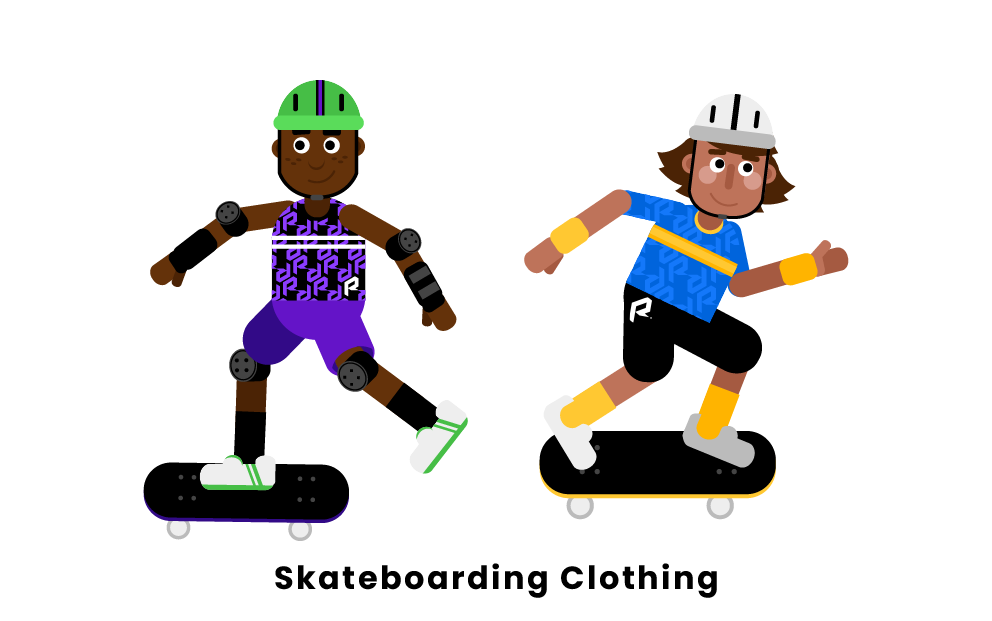
Safety is the primary concern whenever you skate. If you buy a deck, you should purchase skateboard helmets or pads and gloves to protect yourself from grave injury.
Skateboarding Helmets
When you think about safeguarding equipment, helmets are the first thing to consider when it comes out. They shield the head and the area around it. There is an array of helmets in a variety of sizes and shapes.
For novices, full-cut headgear is the best choice. They are 100 100% secure for your neck and head and even your ears. They’re heavier; however, they provide the best safety. You can also choose traditional-style helmets, even though they do not completely cover your neck. Additionally, they have cuts to both ears. However, they’re smaller and more comfortable than full-cut helmets.
If you are a beginner or a beginner, you must choose a certified helmet over one that isn’t certified. The benefit of certified helmets is that they are made of thicker foam that offers superior protection for the head. Make sure you purchase an impact helmet that protects your head from a range of collisions. However, helmets that are not certified are also used by many skateboarders. However, they’re made of soft materials that can only safeguard you from injuries that aren’t serious. Ensure you purchase a certified helmet for complete and secure protection of your ears, head, and neck.
Skateboarding Pads
Skateboard pads help protect your elbows, knees as well as wrists. If you slip and fall while skating, your elbows, knees, and wrists could be injured. Therefore, safeguarding these areas is vital, particularly for aspiring to become skaters or those who are just beginning to learn about skating.
Always pick the best skateboarding pads made of durable and high-quality materials to guard yourself against injuries.
Skateboarding Gloves
Alongside pads and helmets, gloves are an essential item for people who skate. There are a variety of gloves to choose from. Some are made of plastic and safeguard your fingers and palms when you slide across the floor. Many skateboarding gloves come with paddings large enough to guarantee total safety and ease of use for your hands. In addition, the gloves are made with abrasion-resistant fabric to safeguard your hands and skin from damage caused due to the force of scratching.
Tips and Tricks Involved in Skateboarding
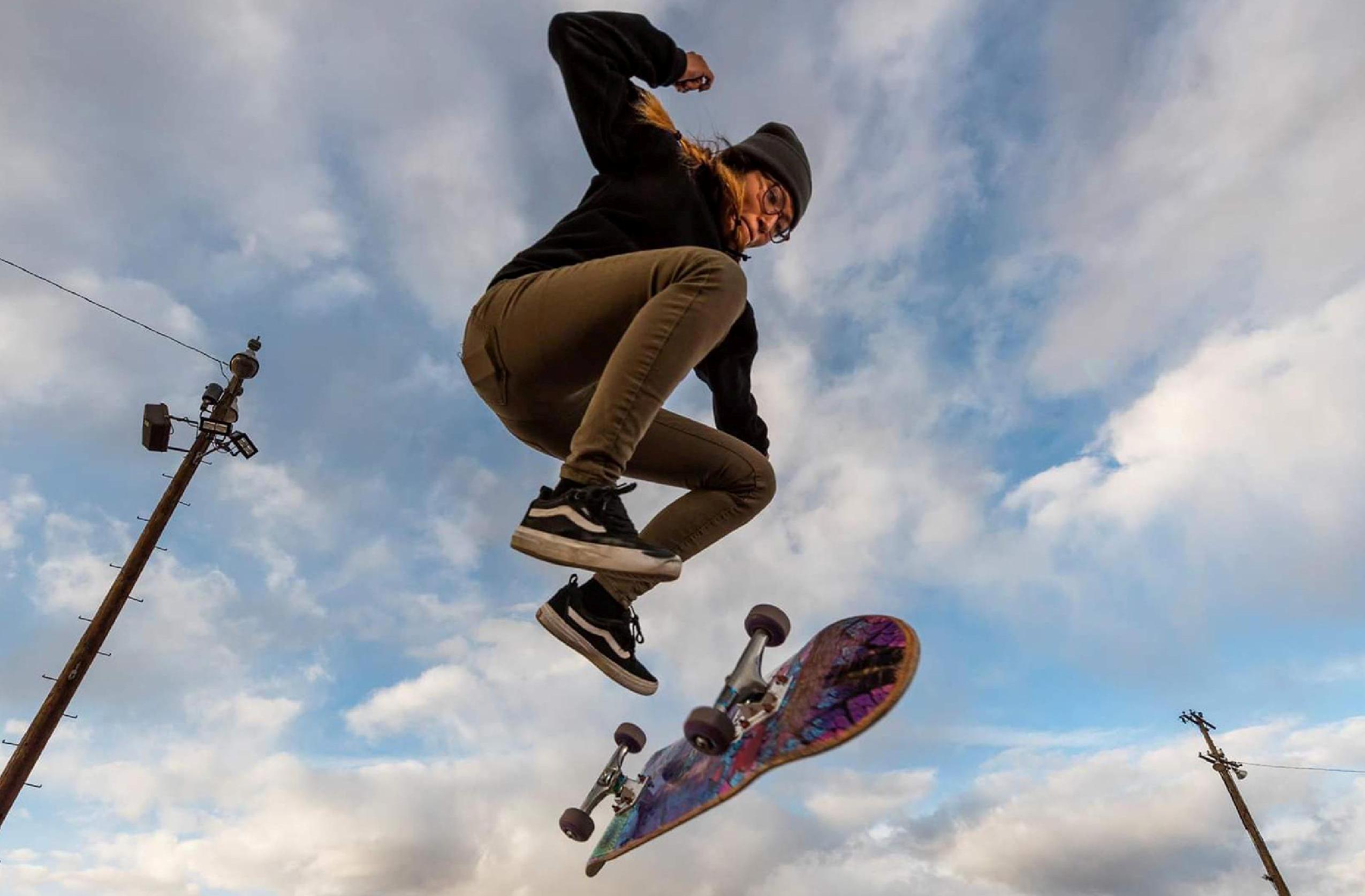
Ollie
In honor of the person who invented the concept, Alan “Ollie” Gelfand, the ollie is the foundation of skateboarding today. It is a type of air that can’t be controlled by hand and is achieved by hitting an edge with the ground and then lifting the rebound into the air with just feet. Over time, the ollie has evolved into a variety of variations. The most popular are listed below.
Shove It
A collision where the board’s tail strikes the ground at a 45-degree angle. This causes the energy of the collision and causes the direction of the board by 180° laterally. This happens beneath the skating’s feet.
Kickflip
The trick that made skateboarding become a popular sport is an ollie. The foot in the ollie rotates the rebounding board a full circle along its entire length. Following that, it’s back in the air before returning to the ground. If executed correctly, a kickflip can appear like magic.
Heelflip
A kickflip can be described as when you flip the spin to reverse the spin in other in the opposite direction. Heelflips aren’t as well-known as kickflips because they’re more difficult to predict and brutal when a skater cannot make a good judgment.
Grinds/slides
Utilizing different components of the skateboard, which are constructed from wooden (slides) and the bottom portion of the carriage made of metal (grinds) to strike the edges that are the part of the ground that skateboarders ride. Grindings and slides are usually combined with other tricks to create more intricate and difficult combos!
Nollie
An ollie that is executed using your nose and not the tail. It is the reverse of flow. Requires an overhaul of the skateboarder’s brain to comprehend the method to perform tricks that begin by ollie. Thus tricks that require nollies are considered more difficult and therefore are accepted.
Grabs
The method used of holding the skateboard on the flight might be more about fashion than the need. Every part of the board is easily held by either hand to create the appearance of an extended or tweep to show the ability and ability to control.
Switchstance
The trick is nothing more complicated than inversion, a skate “switch” actually going backward against the position one decides to use while fighting. Re-creating the stance of any move switch is comparable to learning how to play golf in different ways but at a higher chance of injury due to mistakes caused by wrong math!
Also Check Out: Important Features to Consider When Choosing a Skateboard in 2022
Winding Up!
You’re done with Skateboarding 101. We hope this article can allow skating to be more accessible to you, and you’ll be inspired to set out and test it out for yourself! Before you go out on the ice, make sure that you follow our safety guidelines to ensure you’re safe.
